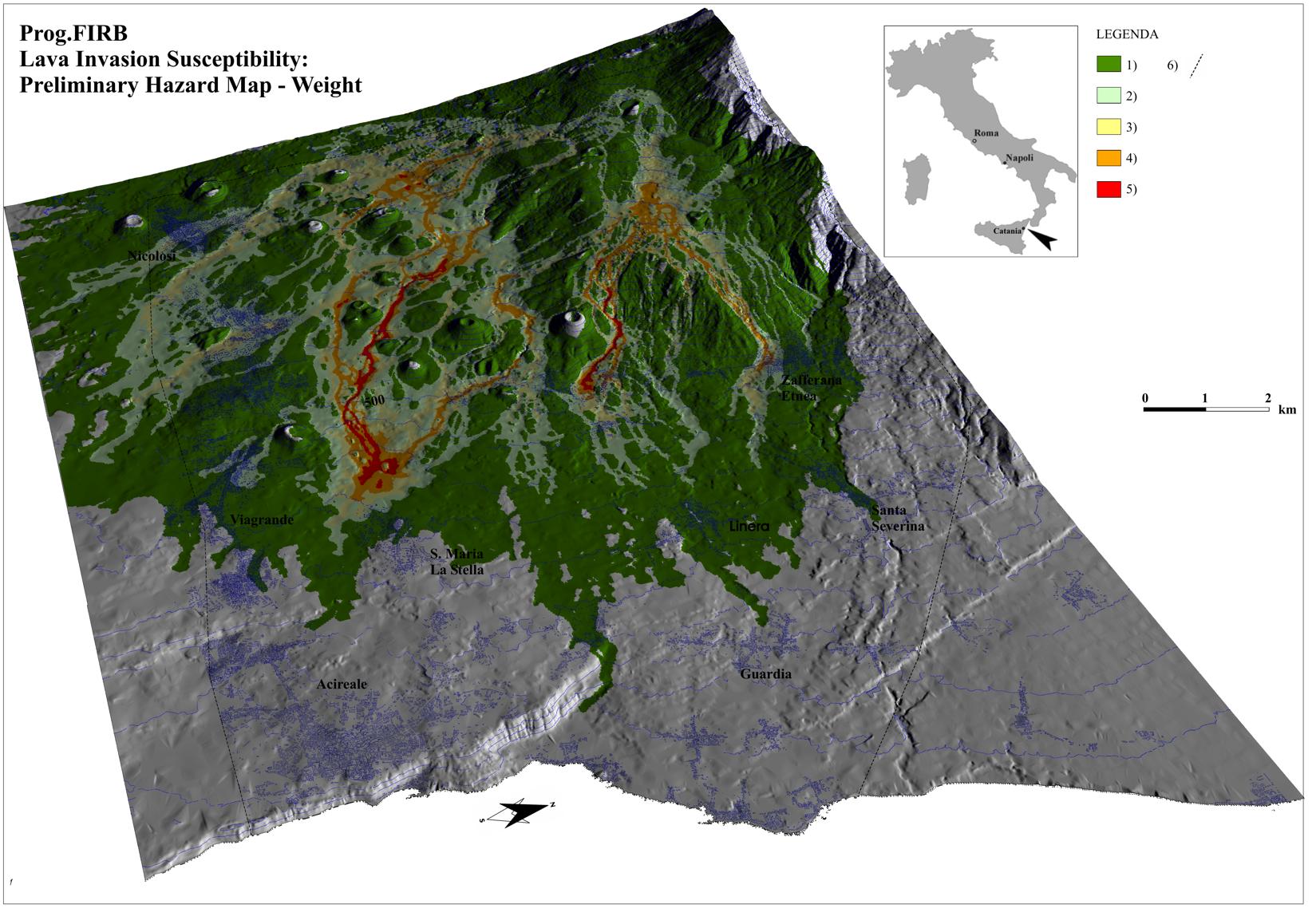Research interests
My research is located within the Scientific Computing field and, therefore, in a interdisciplinary context, touching a variety of fields: from modelling to Parallel Computing, from optimization to the study of complex systems. However, the current representative research regards computer science applications (mostly by means of Parallel Computing) to the modeling and simulation of natural processes, studies that are having an increasing interest in the scientific community, both for theoretical aspects and, more specifically, for possible applications related to the assessment and mitigation of geological events (such as debris flows, invasion lava, pyroclastic flows, floods, etc.) The studies are substantiated in the development of a methodology for the use of Cellular Automata - parallel models that are computationally equivalent to Turing Machines - for the study of natural and artificial complex systems and using, for their optimization, techniques based on the Genetic Algorithm's computational paradigm.
Our Empedocles research group of the University of Calabria (Italy), active in the natural phenomena simulation field (e.g. lava and debris flows, bioremediation processes, soil erosion, etc) for over 30 years, has developed the Cellular Automata model SCIARA for simulating Etnean lava flows with interesting results, for both simulation and hazard area determination and mitigation; different model versions have been developed, validated and applied to various complex situations of hazard. The same methodology has been applied with success for the simulation of debris/mud flows, as those occurred in the Sarno area in 1998 (Campania, Italy), using the SCIDDICA CA model and to pyroclastic flows, as the famous 1991 Mt. Pinatubo eruption (The Philippines), by using the PYR CA model. For all models, the comparison between real and simulated events is satisfying within limits to forecast the surface covered by the phenomenon. Among other applications, SCIARA is an operative instrument for real cases and represents an important stage of development of CA to lava flows. SCIARA has been applied with success as an auxiliary instrument during different Etnean emergencies, and specifically was brought up to the attention of both the Scientific and Public communities during the 2001 and 2002 Etnean eruptive events. Recently, we are interested in producing thematic maps (cf. figure above) showing the susceptibility to lava invasion with the aim of creating hazard maps based on a statistical approach, by simulating thousands of lava flows, starting from all probable emission points, each with a different eruptive history (i.e. effusion rate, duration) and different admissible (if necessary) rheological parameters. The work is done in collaboration with INGV of Catania (Italy).

Parallel computing is certainly a main issue in my research: In fact, without the use of massively parallel computers, the CA approach together with GA techniques would be of no practical use. Highly parallel computers offer the most natural architecture for a CA machine. These systems are based on a number of interconnected processing elements which perform a task concurrently. Both Shared Memory and Distributed Memory architectures are suitable to support CA/GA implementation achieving high parallel efficiencies. Model implementation is performed on sequential and parallel computers, using both Message Passing (MPI, Message Passing Interface) and shared-memory (e.g. OpenMP) paradigms, and, recently, on techniques based on the promising GPGPU (General Purpose computing on Graphics Processing Units) paradigm, all considered in these researches mainly to improve performance and reduce computing timings.
My latest research line concerns the implementation of CA computational models by means of GPGPU (General Purpose Programming with Graphics Processing Units). GPUs (Graphical Processing Units) are usually adopted for their efficiency for computer graphic purposes (e.g. rendering processes, three dimensional image creation). However, recently, they are also exploited for applications not directly related to the field of Computer Graphics with excellent results. Different implementations of our models have been carried out both on high-end processors (eg Nvidia K20 and TESLA C2070, specifically designed for High Performance Computing) and commodity cards (Geforce GT330M, Series GTX, etc) using the NVIDIA CUDA architecture. The results of the simulations demonstrated the performance improvements up to the order of a factor of 100, depending on size of the problem and the type of memory optimization, confirming the validity of the processors in the GPU implementation of models as an alternative to hardware solutions more expensive as clusters or multi-core machines. Another research is related to the Evolutionary Computation field, where evolutionary applications (e.g. Genetic Algorithms) are jointly applied to complex geological simulations models (such as lava flows, debris flows or avalanches) for the morphological evolution of protection measures for risk mitigation.
More information on my research can be found on my Publications page.